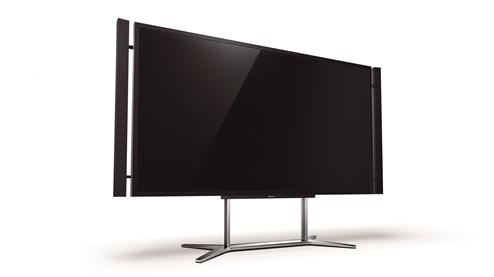Toshiba and Sony look to rejuvenate TV sales with ‘ultra-definition’ releases

4K sets to arrive in UK this autumn
Among the announcements being made at German trade show IFA this week has been the release of new ‘ultra-definition’ 4K TVs from Sony and Toshiba, as vendors look away from 3D in order to boost TV sales.
Both firms have unveiled 84-inch screens featuring the latest technologically wizardry intended to entice customers to shell out on new sets, with Sony’s Bravia version slated for UK release this autumn.
The two 4k LCD sets have incredibly high resolutions of 3840 x 2160 – four times higher than that found on a Blu-ray disc. 4K is not necessarily totally new, but Sony has interestingly decided to market the mammoth TV around its increased resolution, making less noise about its 3D capabilities.
The price tag is likely to be suitably astronomical when the first devices hit the UK later this year however, with figures of upwards of twenty grand likely.
So are Sony and Toshiba onto a money spinner that will help the beleaguered TV business? Hardware retailers could certainly do with an influx of sales with a new technology to spur sales in a way that 3D has perhaps failed to do on a large scale.
Nigh on all TV vendors are operating at losses, and most have been for some time – even the seemingly unstoppable Samsung struggling with its TV sales. Part of the reason is that consumers in markets such as the UK have in many cases already upgraded to flat screen LCD, so replacement sales remain slow.
According to TV market analyst, Bob Raikes, who is present at IFA, the superlative technology should firmly grasp the attention of gamers and film buffs, but mass market appeal could be hampered to an extent by difficulties in receiving 4K signals
“4K will not be a big driver of purchases for watching broadcast content because of the barriers to transmissions,” Raikes said.
“Even carriers that have plenty of bandwidth will need new set top boxes and transmission equipment and the new generation of codecs such as the new H.264 HEVC will need time to mature and be built into lower cost chips.
However Raikes says that at IFA Toshiba is already showing some 4K game content from PCs using native 4K content, describing them as “simply stunning”.
“The feeling is so immersive that I found I was getting genuine motion sickness watching a driving game,” Raikes says.
He adds that the using Blu-ray discs using content shot on 4K cameras works well when upscaled onto 4K sets.
“So, Sony is probably thinking more about Blu-ray and the next generation PlayStation,” he says, adding “if that ran at 4K natively, I’d be very tempted to upgrade my TV!”
DisplaySeach analyst Paul Gray, also at IFA, highlights one of the of the major drawbacks with 4K currently – the lack of available content – and does not anticipate 4k sets seeing major sales in the short term at least.
“We do not anticipate them tunneling rapidly down the product ranges,” he says.
“The critical issue is no content in 4k2k at present. If the PC industry starts a pixel war (Apple are already increasing Mac resolutions) and the next generation of games machines have higher resolutions then they could catalyse growth.”
“However there are some unsolved steps in panel technology that need to be fixed first. For example, 4k2k displays currently have a limit on refresh at 120Hz.”